- Clone
- RM4-5 (See other available formats)
- Regulatory Status
- RUO
- Other Names
- L3T4, T4
- Isotype
- Rat IgG2a, κ
- Ave. Rating
- Submit a Review
- Product Citations
- publications
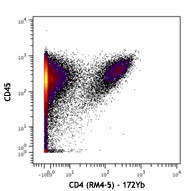
-

C57BL/6 mouse splenocytes stained with 147Sm-anti-CD45 (30-F11) and 172Yb-anti-CD4 (RM4-5). Data provided by DVS Sciences.
| Cat # | Size | Price | Quantity Check Availability | Save | ||
|---|---|---|---|---|---|---|
| 100561 | 100 µg | 85€ | ||||
CD4 is a 55 kD protein also known as L3T4 or T4. It is a member of the Ig superfamily, primarily expressed on most thymocytes and a subset of T cells, and weakly on macrophages and dendritic cells. It acts as a co-receptor with the TCR during T cell activation and thymic differentiation by binding MHC class II and associating with the protein tyrosine kinase lck.
Product DetailsProduct Details
- Verified Reactivity
- Mouse
- Antibody Type
- Monoclonal
- Host Species
- Rat
- Immunogen
- BALB/c mouse thymocytes
- Formulation
- Phosphate-buffered solution, pH 7.2, containing 0.09% sodium azide and EDTA.
- Preparation
- The antibody was purified by affinity chromatography.
- Concentration
- 1.0 mg/ml
- Storage & Handling
- The antibody solution should be stored undiluted between 2°C and 8°C.
- Application
-
FC - Quality tested
CyTOF® - Verified - Recommended Usage
-
This product is suitable for use with the Maxpar® Metal Labeling Kits. For metal labeling using Maxpar® Ready antibodies, proceed directly to the step to Partially Reduce the Antibody by adding 100 µl of Maxpar® Ready antibody to 100 µl of 4 mM TCEP-R in a 50 kDa filter and continue with the protocol. Always refer to the latest version of Maxpar® User Guide when conjugating Maxpar® Ready antibodies.
- Application Notes
-
The RM4-5 antibody blocks the binding of GK1.5 antibody and H129.19 antibody to CD4+ T cells, but not RM4-4 antibody. Additional reported applications (for the relevant formats) include: blocking of ligand binding, in vivo depletion of CD4+ cells1, and immunohistochemistry of acetone-fixed frozen tissue sections2,3,11 and paraffin-embedded sections11. Clone RM4-5 is not recommended for immunohistochemistry of formalin-fixed paraffin sections. Instead, acetone frozen or zinc-fixed paraffin sections are recommended. The Ultra-LEAF™ Purified antibody (Endotoxin < 0.01 EU/µg, Azide-Free, 0.2 µm filtered) is recommended for functional assays (Cat. No. 100575 and 100576).
- Additional Product Notes
-
Maxpar® is a registered trademark of Standard BioTools Inc.
- Application References
-
- Kruisbeek AM. 1991. In Curr. Protocols Immunol. pp. 4.1.1-4.1.5. (Block, Deplete)
- Nitta H, et al. 1997. Cell Vision 4:73. (IHC)
- Fan WY, et al. 2001. Exp. Biol. Med. 226:1045.
- Muraille E, et al. 2003. Infect. Immun. 71:2704. (IHC)
- León-Ponte M, et al. 2007. Blood 109:3139. (FC)
- Bourdeau A, et al. 2007. Blood doi:10.1182/blood-2006-08-044370. (FC)
- Matsumoto M, et al. 2007.J. Immunol.178:2499. PubMed
- Shigeta A, et al. 2008. Blood 112:4915. PubMed
- Zaborsky N, et al. 2010. J. Immunol. 184:725. PubMed
- Rodrigues-Manzanet R, et al. 2010. P. Natl Acad Sci USA 107:8706. PubMed
- Whiteland JL, et al. 1995. J. Histochem. Cytochem. 43:313. (IHC)
- Product Citations
-
- RRID
-
AB_2562762 (BioLegend Cat. No. 100561)
Antigen Details
- Structure
- Ig superfamily, 55 kD
- Distribution
-
Majority of thymocytes, T cell subset
- Function
- TCR co-receptor, T cell activation
- Ligand/Receptor
- MHC class II molecule
- Cell Type
- Dendritic cells, T cells, Thymocytes, Tregs
- Biology Area
- Immunology
- Molecular Family
- CD Molecules
- Antigen References
-
1. Barclay A, et al. 1997. The Leukocyte Antigen FactsBook Academic Press.
2. Bierer BE, et al. 1989. Annu. Rev. Immunol. 7:579.
3. Janeway CA. 1992. Annu. Rev. Immunol. 10:645. - Gene ID
- 12504 View all products for this Gene ID
- UniProt
- View information about CD4 on UniProt.org
Related FAQs
- I am unable to see expression of T cell markers such as CD3 and CD4 post activation.
- TCR-CD3 complexes on the T-lymphocyte surface are rapidly downregulated upon activation with peptide-MHC complex, superantigen or cross-linking with anti-TCR or anti-CD3 antibodies. PMA/Ionomycin treatment has been shown to downregulate surface CD4 expression. Receptor downregulation is a common biological phenomenon and so make sure that your stimulation treatment is not causing it in your sample type.
- Can I obtain CyTOF data related to your Maxpar® Ready antibody clones?
-
We do not test our antibodies by mass cytometry or on a CyTOF machine in-house. The data displayed on our website is provided by Fluidigm®. Please contact Fluidigm® directly for additional data and further details.
- Can I use Maxpar® Ready format clones for flow cytometry staining?
-
We have not tested the Maxpar® Ready antibodies formulated in solution containing EDTA for flow cytometry staining. While it is likely that this will work in majority of the situations, it is best to use the non-EDTA formulated version of the same clone for flow cytometry testing. The presence of EDTA in some situations might negatively affect staining.
- I am having difficulty observing a signal after conjugating a metal tag to your Maxpar® antibody. Please help troubleshoot.
-
We only supply the antibody and not test that in house. Please contact Fluidigm® directly for troubleshooting advice: http://techsupport.fluidigm.com/
- Is there a difference between buffer formulations related to Maxpar® Ready and purified format antibodies?
-
The Maxpar® Ready format antibody clones are formulated in Phosphate-buffered solution, pH 7.2, containing 0.09% sodium azide and EDTA. The regular purified format clones are formulated in solution that does not contain any EDTA. Both formulations are however without any extra carrier proteins.
Other Formats
View All CD4 Reagents Request Custom ConjugationCustomers Also Purchased
Compare Data Across All Formats
This data display is provided for general comparisons between formats.
Your actual data may vary due to variations in samples, target cells, instruments and their settings, staining conditions, and other factors.
If you need assistance with selecting the best format contact our expert technical support team.
-
APC anti-mouse CD4

C57BL/6 mouse splenocytes stained with CD4 (clone RM4-5) APC... -
Biotin anti-mouse CD4

C57BL/6 mouse splenocytes stained with biotinylated CD4 (clo... -
FITC anti-mouse CD4
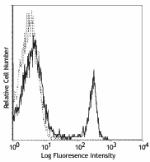
C57BL/6 mouse splenocytes stained with CD4 (clone RM4-5) FIT... -
PE anti-mouse CD4
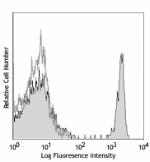
C57BL/6 mouse splenocytes stained with CD4 (clone RM4-5) PE ... 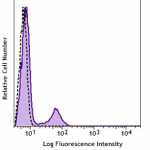
C57BL/6 mouse splenocytes were stained with CD4 (clone RM4-5... -
PE/Cyanine5 anti-mouse CD4

C57BL/6 mouse splenocytes stained with CD4 (clone RM4-5) PE/... -
Purified anti-mouse CD4

C57BL/6 mouse splenocytes stained with purified CD4 (clone R... 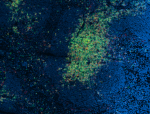
C57BL/6 mouse frozen spleen section was fixed with 4% parafo... -
PE/Cyanine7 anti-mouse CD4
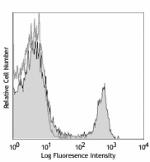
C57BL/6 mouse splenocytes stained with CD4 (clone RM4-5) PE/... -
APC/Cyanine7 anti-mouse CD4
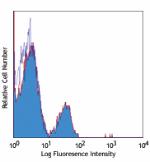
C57BL/6 mouse splenocytes stained with CD4 (clone RM4-5) APC... -
Alexa Fluor® 647 anti-mouse CD4

C57BL/6 mouse splenocytes stained with CD4 (clone RM4-5) Ale... Formalin-fixed, 300 micron-thick mouse spleen section was bl... 
C57BL/6 mouse frozen spleen section was fixed with 4% parafo... 
Paraformaldehyde-fixed (4%), 500 μm-thick mouse spleen tissu... -
Alexa Fluor® 488 anti-mouse CD4
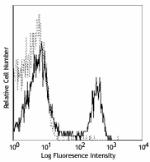
C57BL/6 mouse splenocytes stained with CD4 (clone RM4-5) Ale... 
C57BL/6 mouse frozen spleen section was fixed with 4% parafo... 
Paraformaldehyde-fixed (4%), 500 μm-thick mouse thymus tissu... -
Pacific Blue™ anti-mouse CD4

C57BL/6 mouse splenocytes stained with CD4 (clone RM4-5) Pac... -
Alexa Fluor® 700 anti-mouse CD4

C57BL/6 mouse splenocytes stained with CD4 (clone RM4-5) Ale... -
PerCP anti-mouse CD4
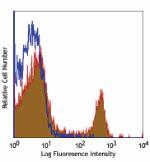
C57BL/6 mouse splenocytes stained with CD4 (clone RM4-5) Per... -
PerCP/Cyanine5.5 anti-mouse CD4

C57BL/6 mouse splenocytes stained with CD3e APC and CD4 (clo... -
Brilliant Violet 421™ anti-mouse CD4
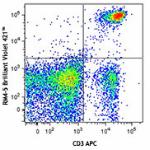
C57BL/6 mouse splenocytes were stained with CD3 APC and CD4 ... 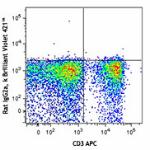

C57BL/6 mouse thymocytes were fixed with 1% paraformaldehyde... 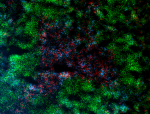
C57BL/6 mouse frozen spleen section was fixed with 4% parafo... -
APC/Fire™ 750 anti-mouse CD4

C57BL/6 splenocytes were stained with CD3 FITC and CD4 (clon... 
-
Brilliant Violet 570™ anti-mouse CD4
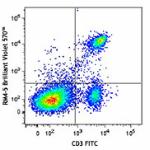
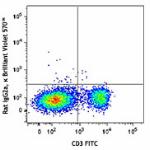
-
Brilliant Violet 605™ anti-mouse CD4
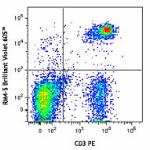
C57BL/6 mouse splenocytes were stained with CD3 PE and CD4 (... -
Brilliant Violet 650™ anti-mouse CD4

C57BL/6 mouse splenocytes were stained with CD3 PE and CD4 (... -
Brilliant Violet 711™ anti-mouse CD4

C57BL/6 mouse splenocytes were stained with CD3 PE and CD4 (... -
Brilliant Violet 785™ anti-mouse CD4

C57BL/6 mouse splenocytes were stained with CD3 PE and CD4 (... -
Brilliant Violet 510™ anti-mouse CD4

C57BL/6 mouse splenocytes were stained with CD3 APC and CD4 ... -
Purified anti-mouse CD4 (Maxpar® Ready)

C57BL/6 mouse splenocytes stained with 147Sm-anti-CD45 (30-F... -
PE/Dazzle™ 594 anti-mouse CD4
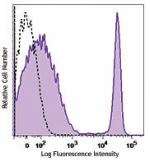
C57BL/6 mouse splenocytes were stained with CD4 (clone RM4-5... -
TotalSeq™-A0001 anti-mouse CD4
-
TotalSeq™-B0001 anti-mouse CD4
-
TotalSeq™-C0001 anti-mouse CD4
-
Ultra-LEAF™ Purified anti-mouse CD4
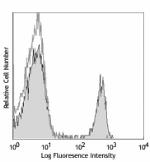
C57BL/6 mouse splenocytes stained with LEAF™ purified CD4 (c... -
Spark Violet™ 423 anti-mouse CD4 (L3T4) Antibody

C57BL/6 splenocytes were stained with anti-mouse CD3e PE and... -
Spark Red™ 718 anti-mouse CD4 (L3T4) (Flexi-Fluor™)
 Login / Register
Login / Register 











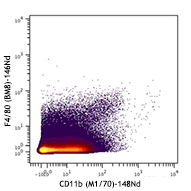

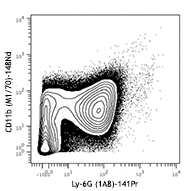
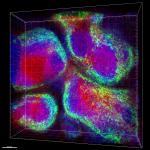



Follow Us